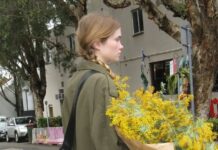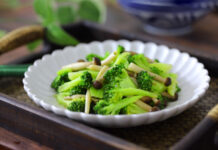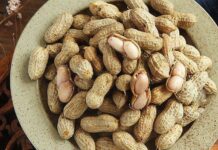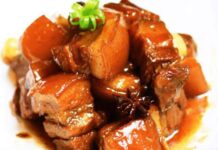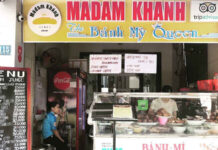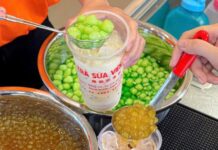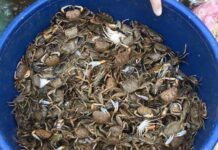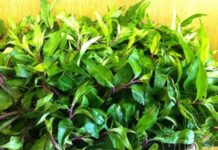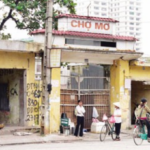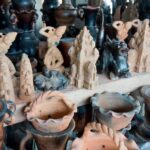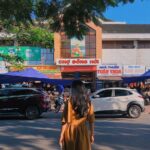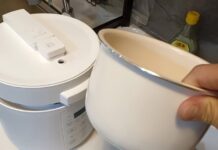Quy Dat Market is nestled in Quy Dat town, the administrative, economic, and cultural center of Minh Hoa district in Quang Binh province. Located in the mountainous western area of Quang Binh, bordering Vietnam and Laos, Quy Dat town spans an area of approximately 15.27 square kilometers and is home to over 8,000 people.
Conveniently situated along National Highway 12A, the market facilitates trade with neighboring areas. It is a gathering place not only for the Kinh people but also for various ethnic minorities in the region, such as the Bru-Van Kieu and Chuut groups.
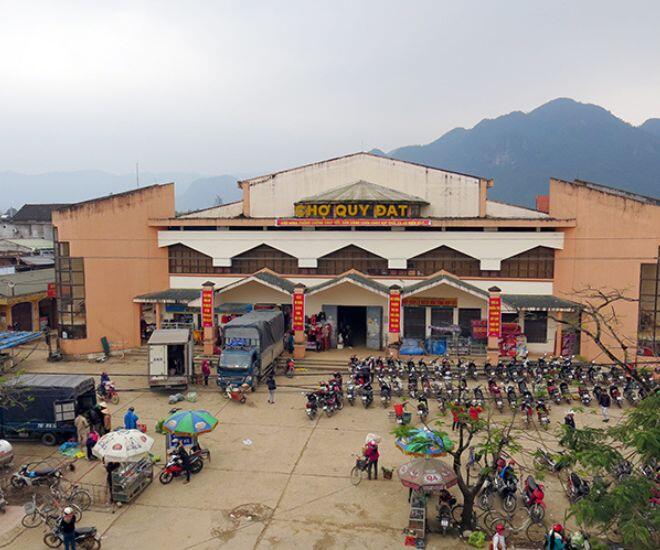
The history of Quy Dat Market is intertwined with the development of Quy Dat town, an area of strategic importance during the two resistance wars against the French and Americans in Vietnam. After 1990, when Minh Hoa district was re-established, Quy Dat town became the district center, fostering the market’s growth.
Quy Dat Market thrives to meet the trading needs of the local community and ethnic minorities in the area. Notably, the market held on the 15th day of the 3rd lunar month coincides with a traditional love market festival, creating a unique cultural attraction that draws locals and tourists alike.
A Diverse Array of Products Reflecting Mountainous Region’s Character
Quy Dat Market stands out for its wide range of products, from local agricultural produce to traditional handicrafts. It is not just a place for trading but also a vibrant showcase of the distinctive cultural traits of the mountainous region of Quang Binh.
The agricultural products available at Quy Dat Market are predominantly local, including fresh vegetables, fruits, wild honey, green tea, and distinctive mountain spices such as mac khen and thao qua. These items are either gathered from the mountains or cultivated using traditional methods, ensuring natural flavors and characteristics.
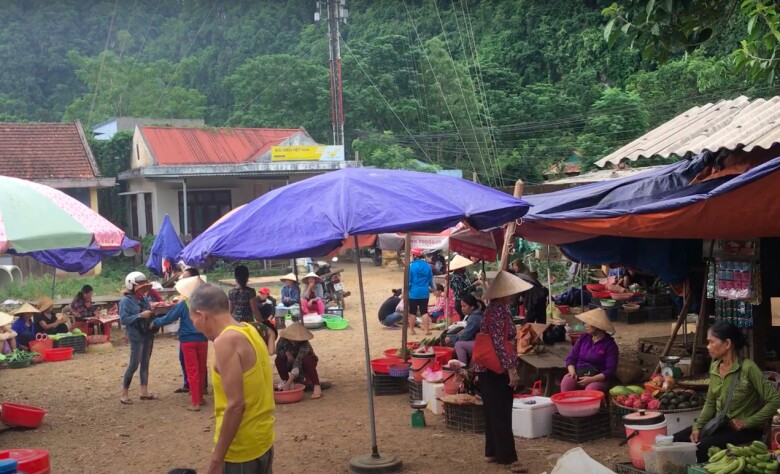
In addition to agricultural produce, the market also offers an array of specialty animal products, including buffalo, beef, wild boar, and local poultry. These are the primary sources of protein in the traditional cuisine of the ethnic minorities in Minh Hoa.
A highlight of the market is the selection of brocade and handicrafts. The brocade products of the Bru-Van Kieu people, along with ethnic costumes and handcrafted silver jewelry, possess not only utilitarian value but also embody the rich cultural and artistic heritage of the ethnic minorities in the mountainous region of Quang Binh.
Moreover, the market provides essential consumer goods and household items to meet the daily needs of the highland residents, catering to the diverse shopping requirements of the local population.
Captivating Cuisine – The Soul of the Highland Market
The cuisine at Quy Dat Market seamlessly blends characteristic mountain ingredients with the traditional cooking techniques of the ethnic minorities, resulting in dishes imbued with the flavors of the forest.
A standout specialty is “com poi,” a traditional sticky rice dish of the Bru-Van Kieu people, typically accompanied by various forest meats or vegetables. This dish has become an integral part of the culinary culture of the ethnic minorities in Minh Hoa.
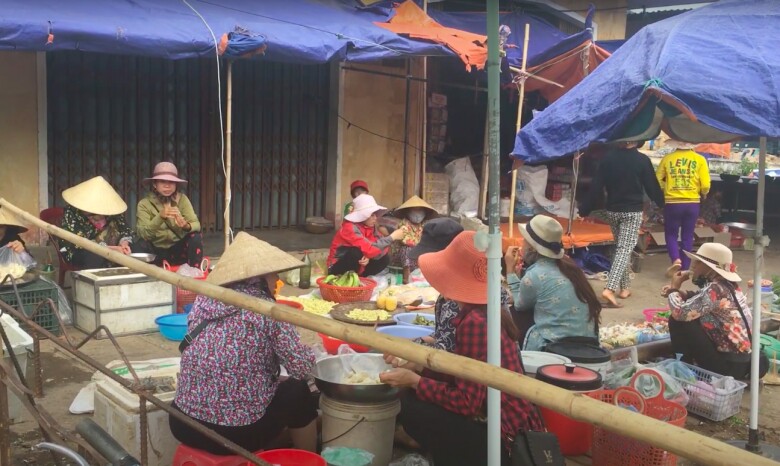
Another renowned delicacy of the region is “oc duc” (male snail), prepared in numerous enticing ways, showcasing the fusion of natural ingredients and the refined cooking skills of the local people.
Green tea and wild honey are also prominent specialties, available for tasting and purchase at the market. The green tea from the Minh Hoa mountains is celebrated for its robust flavor, while the wild honey, collected from pristine forests, guarantees quality and natural sweetness.
Additionally, visitors to Quy Dat Market have the opportunity to indulge in rustic dishes like grilled meat, “thang co” (a traditional stew), and other creations crafted from mountain ingredients, showcasing the distinctive culinary traits of the mountainous region of Quang Binh.
Unique Cultural Tourism Potential
Currently, Quy Dat Market has emerged as a significant cultural and tourist destination in Minh Hoa district and Quang Binh province. The market not only serves the trading needs of the local populace but also attracts tourists eager to immerse themselves in the distinctive cultures of the ethnic minorities in the mountains.
Especially during traditional festivals like the love market held on the 15th day of the 3rd lunar month, a festive atmosphere takes over, captivating visitors. Within this celebratory setting, tourists can partake in traditional cultural activities, engage in folk games, relish traditional songs, and interact with members of the ethnic groups.
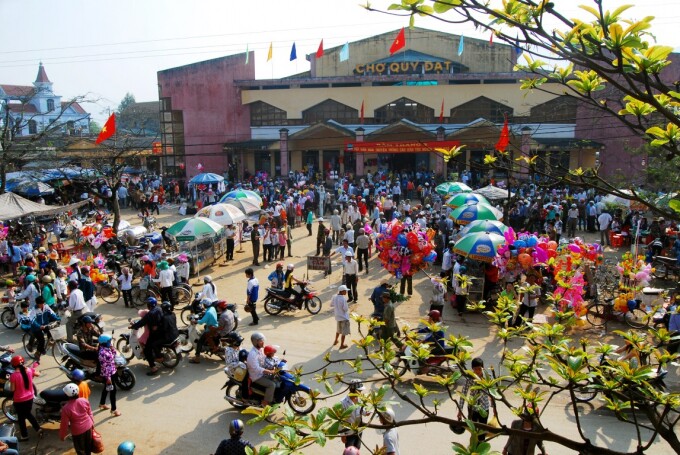
Quy Dat town also serves as a gateway to explore nearby natural and historical attractions, such as Mu Gia Pass, Cha Lo Border Gate, Mo Waterfall, and Tu Lan Cave. This proximity facilitates the development of tourism packages that combine market visits with nature exploration.
Special Experiences at Quy Dat Market
A visit to Quy Dat Market offers a plethora of fascinating and unique experiences. The market held on the 15th day of the 3rd lunar month, accompanied by the love market festival, transforms the place into a vibrant cultural space filled with folk games, traditional songs, and local specialties.
Interacting with members of the Bru-Van Kieu and Chuut ethnic groups, adorned in their traditional attire, is an unforgettable experience for many tourists. Through these exchanges, visitors gain deeper insights into the customs and cultural life of the ethnic minorities in the border region.
Indulging in the market’s culinary delights is a memorable gastronomic experience. The robust and unique flavors of traditional dishes like “com poi” and “oc duc” will leave a lasting impression on visitors.

Shopping for brocade, silver jewelry, and local specialties as souvenirs is a must when visiting Quy Dat Market. These items not only hold utilitarian value but also symbolize the unique cultural heritage of the mountainous region of Quang Binh.
Additionally, tourists can combine their market visit with excursions to nearby natural and historical sites, such as Dan Hoa Sky Gate, Mu Gia Pass, Tu Lan Cave, and more, for a comprehensive travel experience.
Tips for Shopping at Quy Dat Market
To ensure the best shopping experience at Quy Dat Market, visitors should arrive early in the morning when the produce is freshest and most diverse. This is also the liveliest time at the market, allowing visitors to immerse themselves fully in the highland trading atmosphere.
When bargaining with vendors, mostly from ethnic minority groups, it is advisable to maintain a friendly and respectful attitude. This not only demonstrates consideration for the sellers but also contributes to a pleasant shopping experience for all.
Handicrafts like brocade and silver jewelry are culturally significant choices for souvenirs. Additionally, specialties such as wild honey, green tea, “com poi,” and “oc duc” make excellent treats or gifts.
Most importantly, when participating in the market, visitors should respect local customs and avoid excessive haggling, which may cause offense. This not only reflects responsible tourism practices but also helps preserve the positive traditions of the highland market.
Quy Dat Market is a unique highland market, serving not only as a commercial hub but also as a cultural landmark in Minh Hoa district, Quang Binh province. With its advantageous location, diverse offerings, and rich cultural history, Quy Dat Market is a must-visit destination when exploring the mountainous region of Quang Binh.
The market not only provides agricultural and traditional handicraft products but also preserves and promotes the cultural and culinary heritage of the ethnic minorities in the border region. It is a fascinating cultural crossroads where visitors can immerse themselves in the vibrant ethnic culture and discover the pristine beauty of the mountains of Quang Binh.
Unveiling the Charm of a Cham King: A Pottery Village Steeped in Legend and Unique Cultural Heritage.
The village is a haven of traditional craft, a rare gem in Ninh Thuan that has preserved its cultural heritage. Visitors are invited to immerse themselves in the art of pottery, molding clay and shaping it into unique creations with the guidance of skilled artisans. It is an opportunity to connect with the local culture and create memorable, handcrafted souvenirs.





